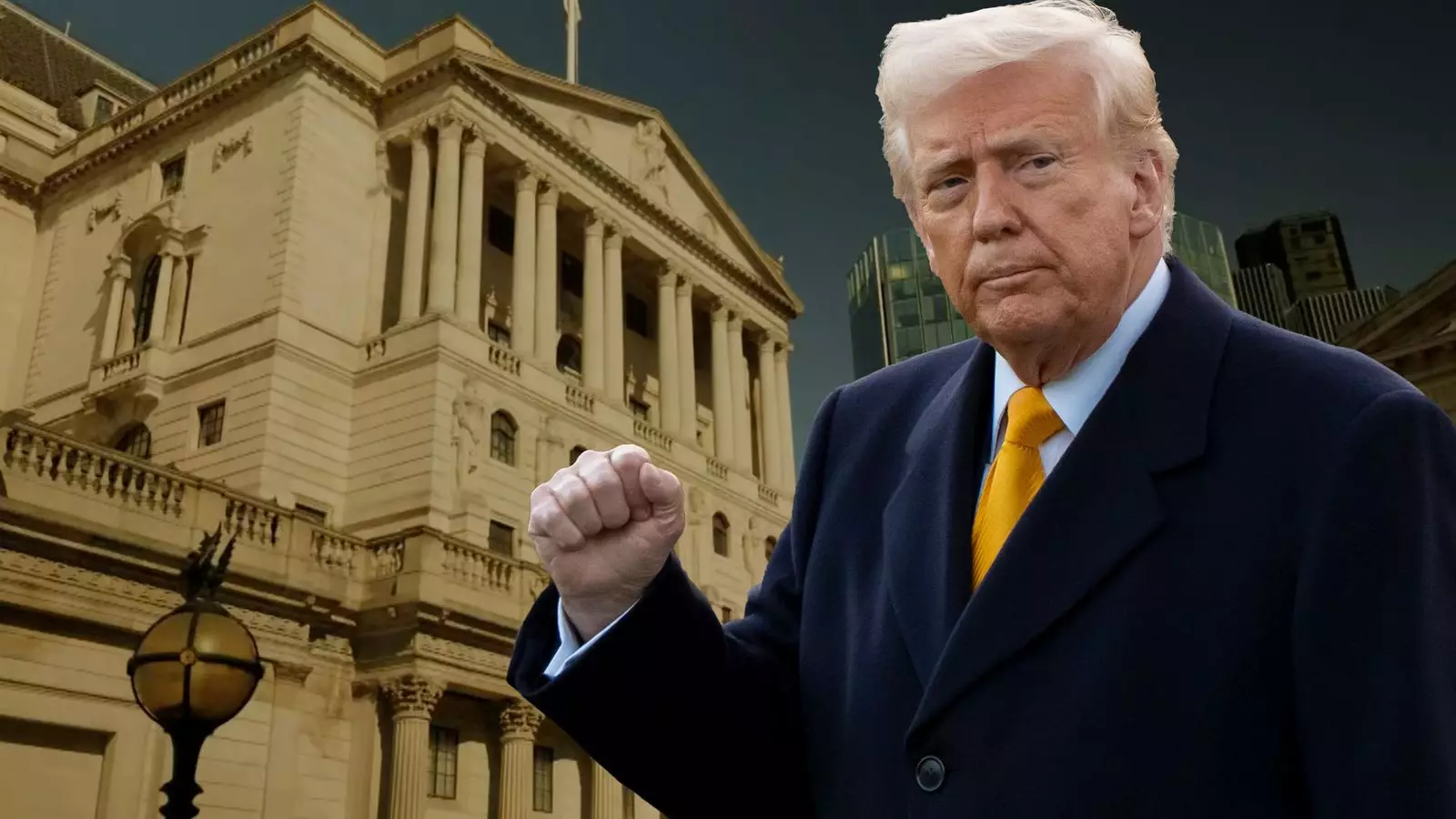In an economic climate that is perpetually shifting under the influence of global factors, the possibility of an interest rate cut by the Bank of England has become a focal point of discussion. Recent data has positioned markets squarely at a 100% probability of such a reduction next month, a striking signal of investor confidence—or perhaps the lack thereof. The underpinning rationale lies in the complexities of Donald Trump’s ongoing trade conflicts, which have sent ripples of uncertainty throughout the global economy. The stakes are astronomically high, and the narrative is anything but conventional.
The incongruence between expectations and reality has never been clearer. Initially, projections indicated an 82% chance of a reduction of the interest rate from 4.5% to 4.25% by May 8. However, that number plummeted after comments from Megan Greene, a notable figure within the rate-setting committee. Greene’s insights resonate deeply: she warns that U.S. tariffs may not escalate domestic inflation, but rather contribute to a gradual decline. This assertion shakes the foundational logic of previous inflationary fears, advocating that the UK’s decision to abstain from retaliatory tariffs could, intriguingly, transform it into a point of arrival for cheaper goods flowing from continents densely populated with manufacturing hubs.
Disinflation: A New Economic Paradigm?
Greene’s viewpoint uncovers a reality that many policymakers might hesitate to embrace: the potential for disinflation rather than inflation in the context of the ongoing trade war. This development is not merely an academic concept but a pressing issue for those navigating the tumultuous waters of economic strategy. Greene clarified that while there exists an ambiguity surrounding future economic performances, the intertwining variables of international trade dynamics may create disinflationary forces that cannot be ignored. The narrative is akin to a tightrope walk; one misstep could lead to a fall into economic instability.
This uncertainty is exacerbated by the sterling’s recent rebound against the dollar. An appreciation of currency typically signals a healthier economy, but in this case, the outcomes remain ambiguous. While a stronger pound could theoretically alleviate inflationary pressures, it may simultaneously harm export competitiveness. The Bank of England is thus trapped in a conundrum, grappling with rising inflation partly fueled by skyrocketing energy costs and looming tax hikes.
The Specter of Trade Wars and Their Economic Consequences
The looming trade war casts a long shadow over the Bank of England’s decision-making capabilities. Rising inflation often constricts the ability of monetary authorities to stimulate growth through rate cuts—what an ironic twist of fate for economists aiming to offset global volatility! While their counterparts in the Eurozone seem to be taking aggressive measures to combat slow growth through swift rate cuts, the Bank of England’s strategy appears tepid at best.
Simultaneously, the U.S. Federal Reserve’s cautious approach raises eyebrows. The Fed is entangled in Trump’s wrath—he recently chided the Federal Reserve’s Chair, Jay Powell, suggesting that he should be dismissed for not addressing inflation with the urgency it demands. This climate of strained relations deepens the sense of instability, as such internal pressures can twist economic policies into convoluted shapes.
A Hopeful Outlook Amid Global Economic Misgivings
As Chancellor Rachel Reeves traverses the corridors of power in Washington, her aim to initiate discussions regarding a new trade agreement could pave the way for alleviating tariffs between the U.S. and the UK. If successful, this could provide a much-needed triumph in establishing favorable trade conditions, potentially reestablishing growth momentum in a fraught economic landscape. A rate cut from the Bank of England could serve as a catalyst for this revival by enhancing investment opportunities and consumer confidence.
Ultimately, as financial markets oscillate between fear and speculation, the UK stands at a pivotal juncture. The choices made in the wake of these transformative dynamics could foster an environment of prosperity or doom. The road ahead is fraught with challenges, yet one cannot ignore the potential of strategic foresight in restoring confidence to the markets. As we embark on this uncertain journey, the stakes couldn’t be higher, and every decision resonates with significant repercussions.

